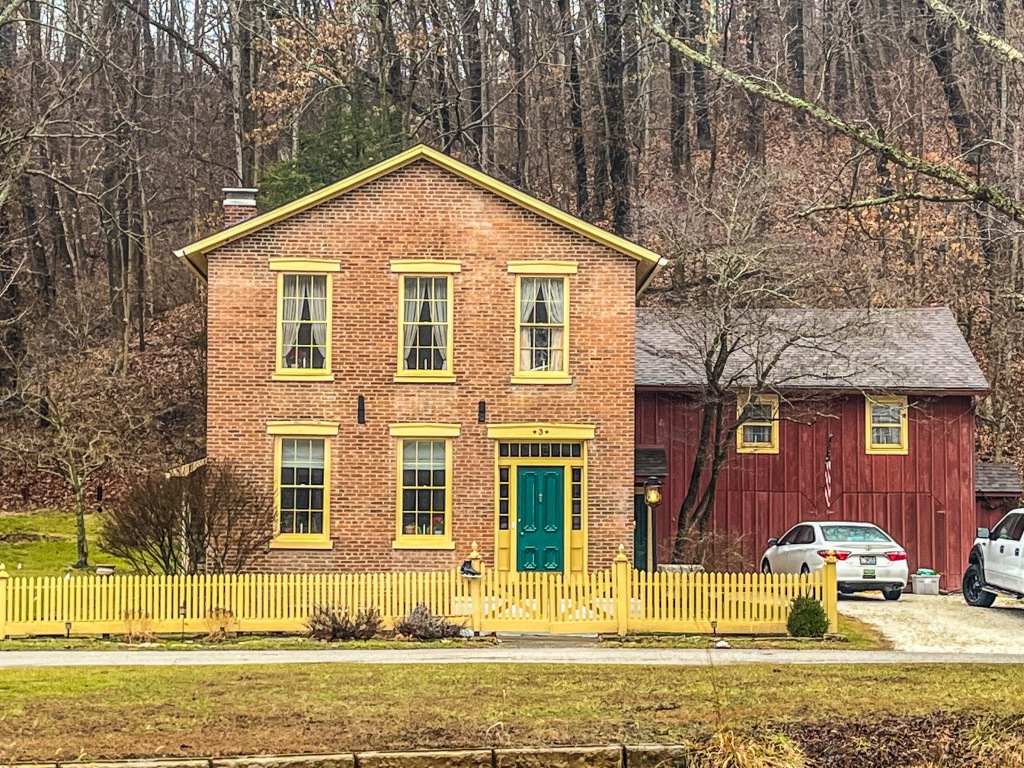It has been a busy year indeed. Travels for work assignments in 2023 took me to many different destinations. At this time in late December, I always feel fortunate to do the work in my chosen profession. I get to visit places with great architecture and others with downtowns and neighborhoods that have stood the test of time. Such places also tell precious stories. They can easily be lost if we fail to care for them. My fulfillment comes from the belief that communities that do care about their futures are the ones that do not let go of their past.
While I have traveled to many communities in 2023 – more than I can cover in one post – I wanted to highlight several that told special stories or moved me in some way. Several photos are forlorn buildings that mark a landscape or are success stories worth celebrating. Others are just powerful places in their own right. I hope you enjoy these photos and the background narratives that come along with them.
Illinois Landscapes
During the winter months of 2023, my work assignments took me to several communities in downstate Illinois to conduct workshops on creating a new statewide historic preservation plan. Of these, the visits to Alton and Marshall were the most memorable for me – two places that I have never been to before despite living in the state all my life. Alton is a scenic river town with a downtown set on rolling hilltops. Marshall, located in southeast central Illinois near the Indiana border, possesses an intact courthouse square anchored at one end by Harlen Hall. Harlen Hall, first constructed in 1872, functioned as an opera house in the past but now serves as a multi-purpose cultural space as well as an architectural icon for the community.



Old Post Office (1907), right.


from Harlen Hall, left.
The visit to Alton allowed a trip to nearby Elsah. Elsah, founded in 1853 and laid out as a prototypical New England Town Village, features an intact collection of Greek, Gothic, and Colonial Revival homes along with pristine vernacular property types. The entire town is listed in the National Register of Historic Places.






Along the Illinois travels, two other places captivated me. The Benjaminville Friends Meeting House near Ellsworth is all that remains of a once-thriving community of Quakers east of Bloomington. Little has changed since its construction in 1824. Its cemetery is a serene place with its dignity disturbed by the presence of a wind turbine viewed in the distance. The other is the Denkman-Hauberg Estate in Rock Island, designed by Robert Spencer and Jens Jensen, once threatened by a municipal-sponsored sale but saved by the collective preservation efforts of dedicated Rock Islanders.






Kansas City, Kansas
Before the start of summer, I visited Kansas City, Kansas to participate in a new comprehensive planning process for Kansas City-Wyandotte County. Most people are familiar with Kansas City, Missouri but not the community on the other side of the Missouri and Kansas Rivers. Kansas City, Kansas has not fared as well as its bustling and rejuvenated neighbor to the east, suffering decades of racial segregation, redlining, and neighborhood decline and disinvestment brought on by the “good intentions” of urban renewal. Despite this, Kansas City, Kansas retains many fascinating historic buildings and places.
Nothing captured my attention more in Kansas City’s urban landscape than its two monumental high schools: Wyandotte High School, a Victorian Gothic and Romanesque edifice built in 1937, and Sumner High School – now the Sumner Academy of Arts and Sciences – a Bauhaus-influenced Art Deco school building constructed in 1940. Both buildings were built in the era of racial segregation where whites and African Americans were forced to attend separate schools. There is something quite dramatic and compelling with Sumner School, the one built for African Americans. No expense was spared for this building in a neighborhood that had been on the decline due to white flight. Now a magnet school for the arts, it is considered one of the top schools of its kind in the country. It looms large over the neighborhood.
Its counterpart, Wyandotte High School, like Sumner, designed and built during the New Deal era, sits within an entire urban block but its towers and architectural design evoke a college campus atmosphere, one nestled comfortably within Kansas City’s turn-of-the-century neighborhoods. They do not build schools like this anymore.



designed by Joseph W. Radotinsky.


Ottumwa, Iowa – the Heart of the Midwest
My first opportunity to visit Ottumwa, Iowa came this past November. Located in south central Iowa, many people may have heard about Ottumwa through the book and television series M.A.S.H. as Radar O’Riley’s hometown. But Ottumwa is more than just this storyline. It boasts a highly intact downtown – although still a project in the making with its long-running Main Street program. It also has several established residential National Register historic districts. Like many Midwestern communities, population decline and neglect have led to the loss of historic fabric here and there. Vacant churches remain a significant preservation challenge in Ottumwa. Ottumwa High School stands out as a presence as the high schools do in Kansas City. Finding some vernacular resources was also a discovery, including some Mid-Century dwellings in Ottumwa’s neighborhoods. Modernism finds its way to every community I visit.








MacArthur Park and Little Rock, Arkansas
My last trip of the year was to MacArthur Park in Little Rock, Arkansas, a historic residential neighborhood located just off the central downtown and home to the Arkansas Museum of Fine Arts. It is well-curated and has a patina. There are also several beautiful Queen Anne cottages that I adore. They exude both picturesqueness and coziness. The Museum sports a new Studio Gang addition that wraps around the original Art Moderne entrance. There is more to write about this place.
Enjoy the pictures. I hope 2024 brings many more discoveries.







